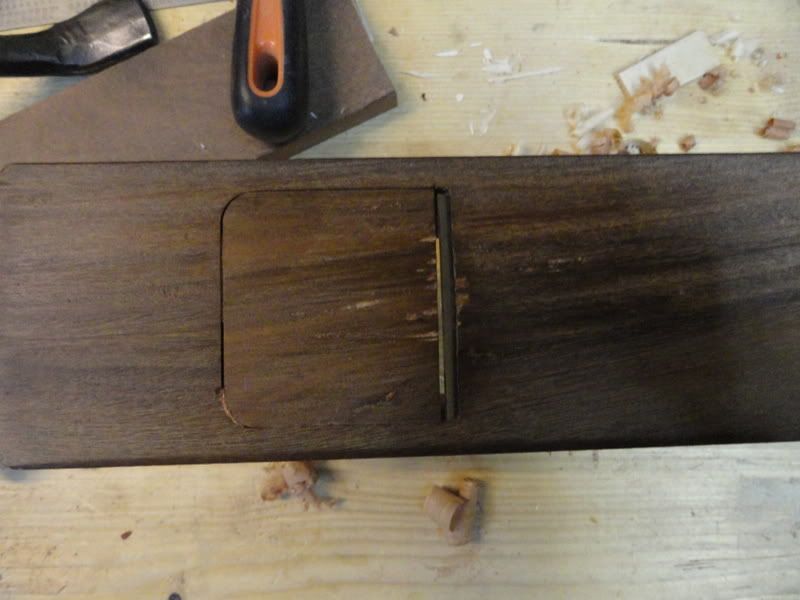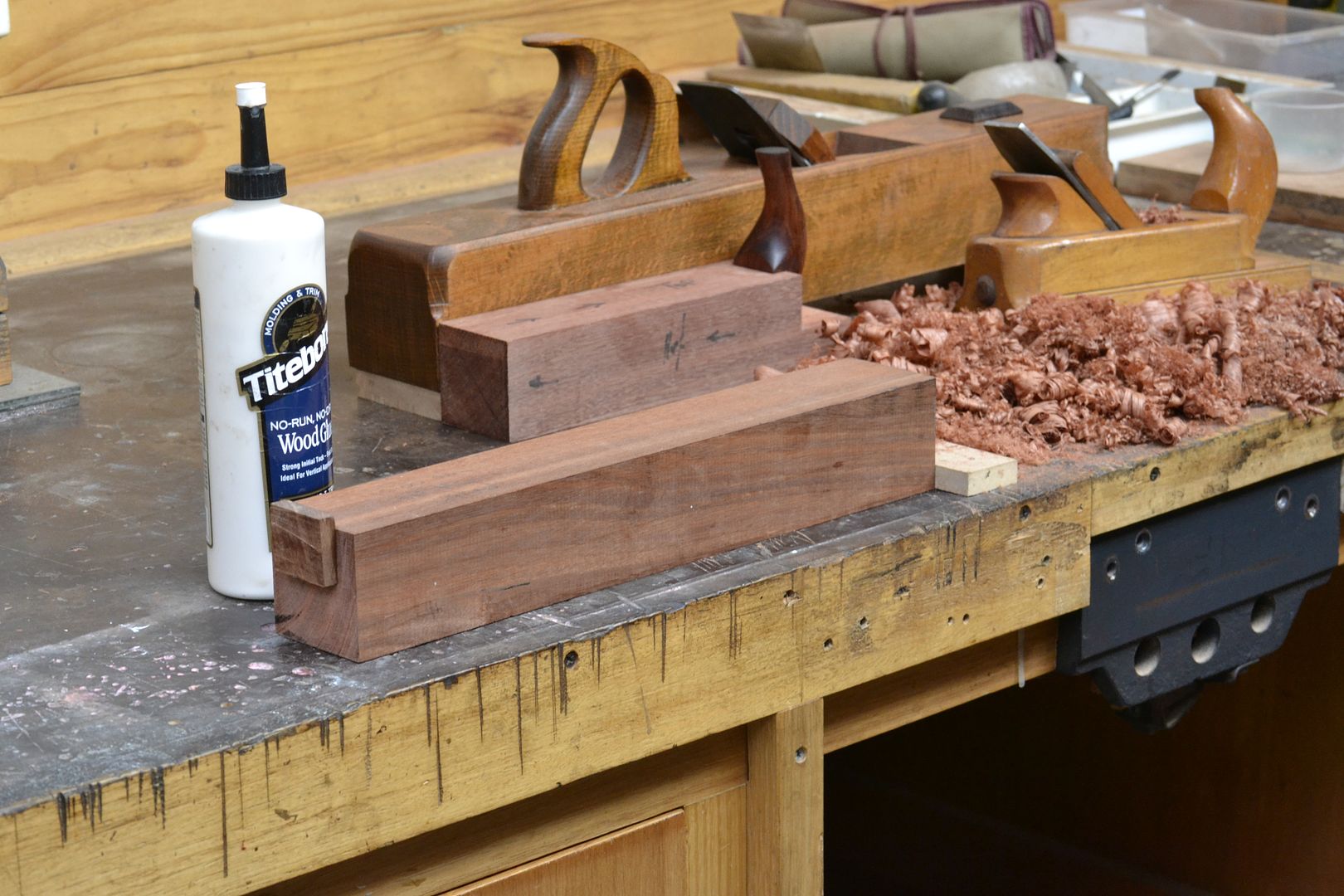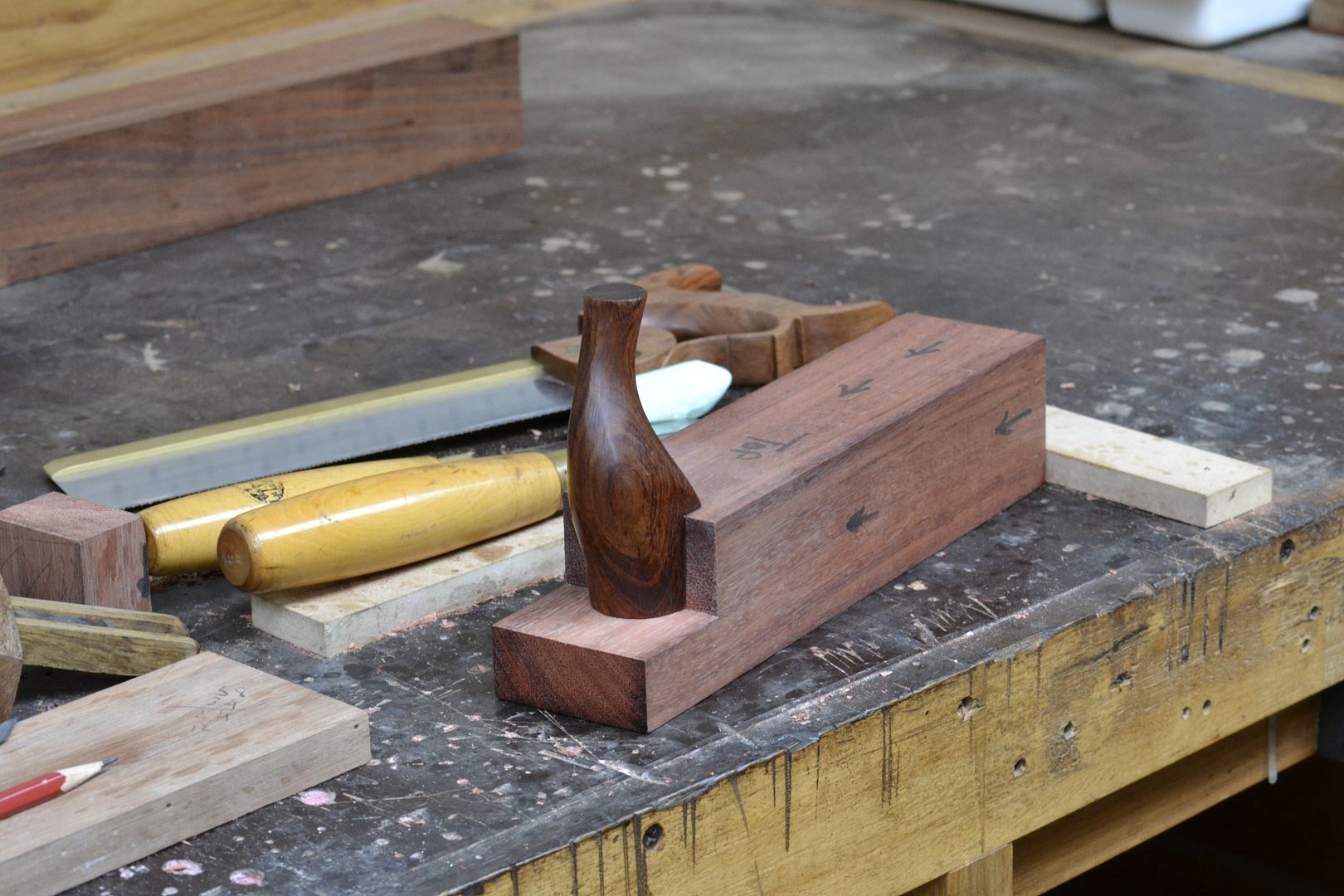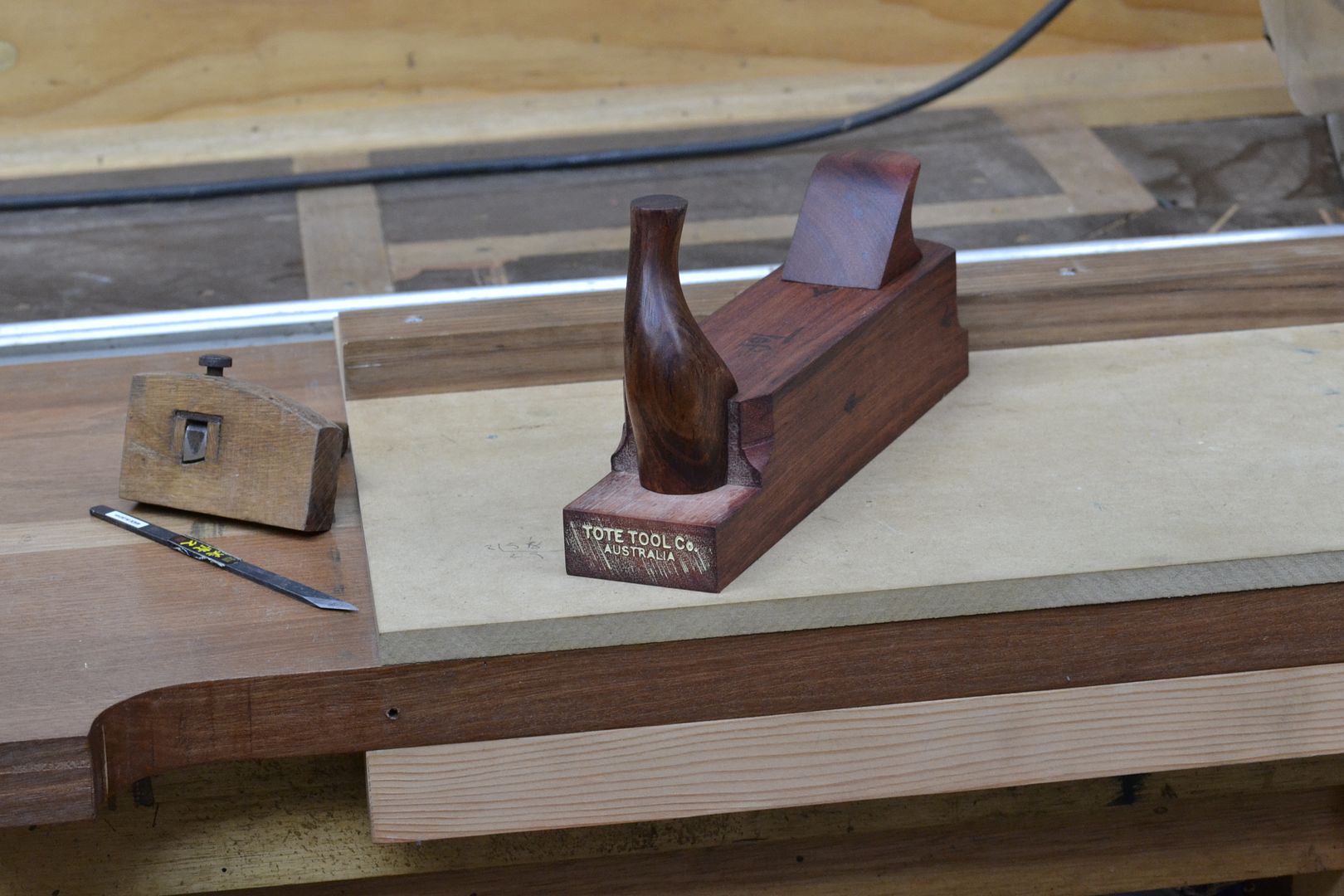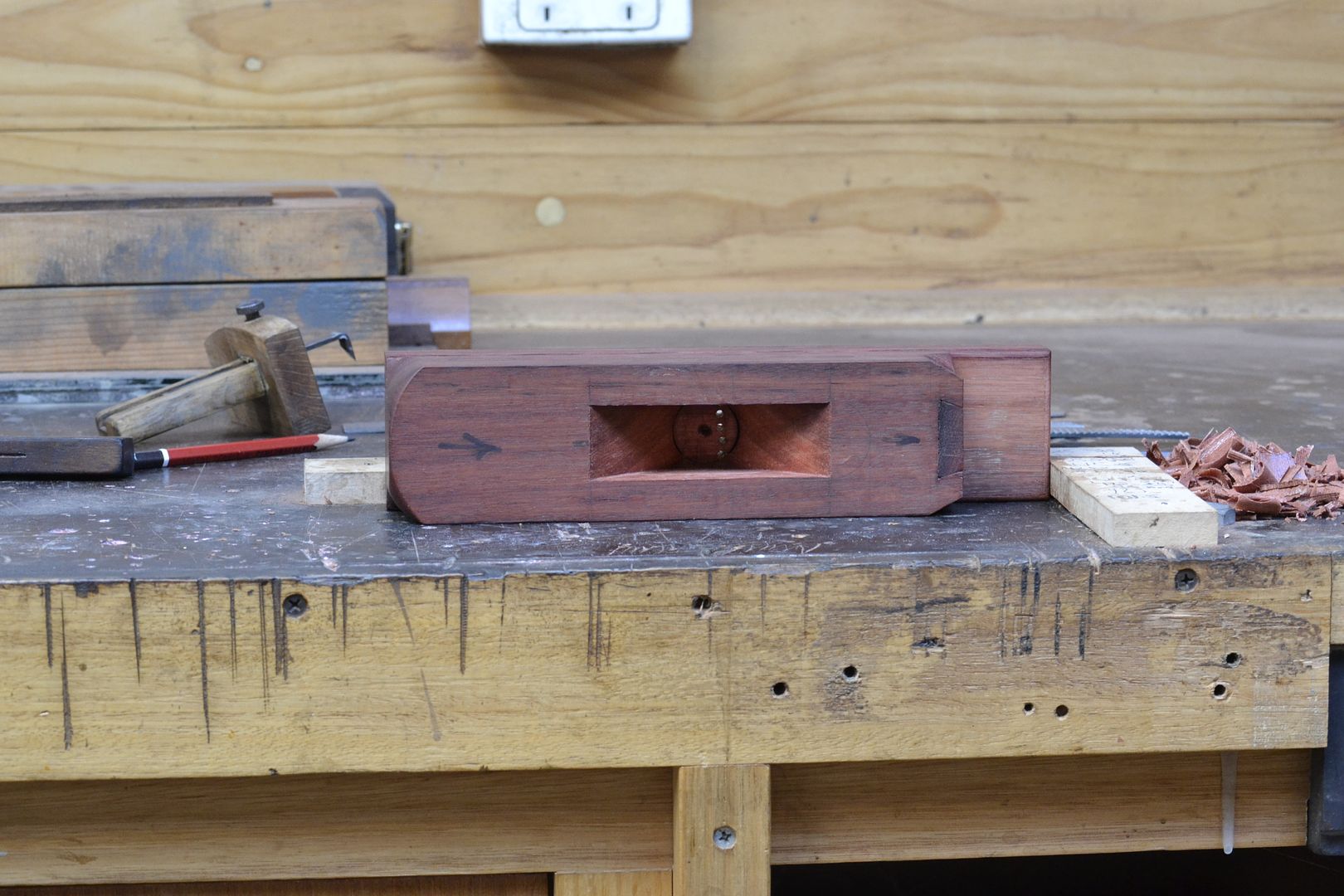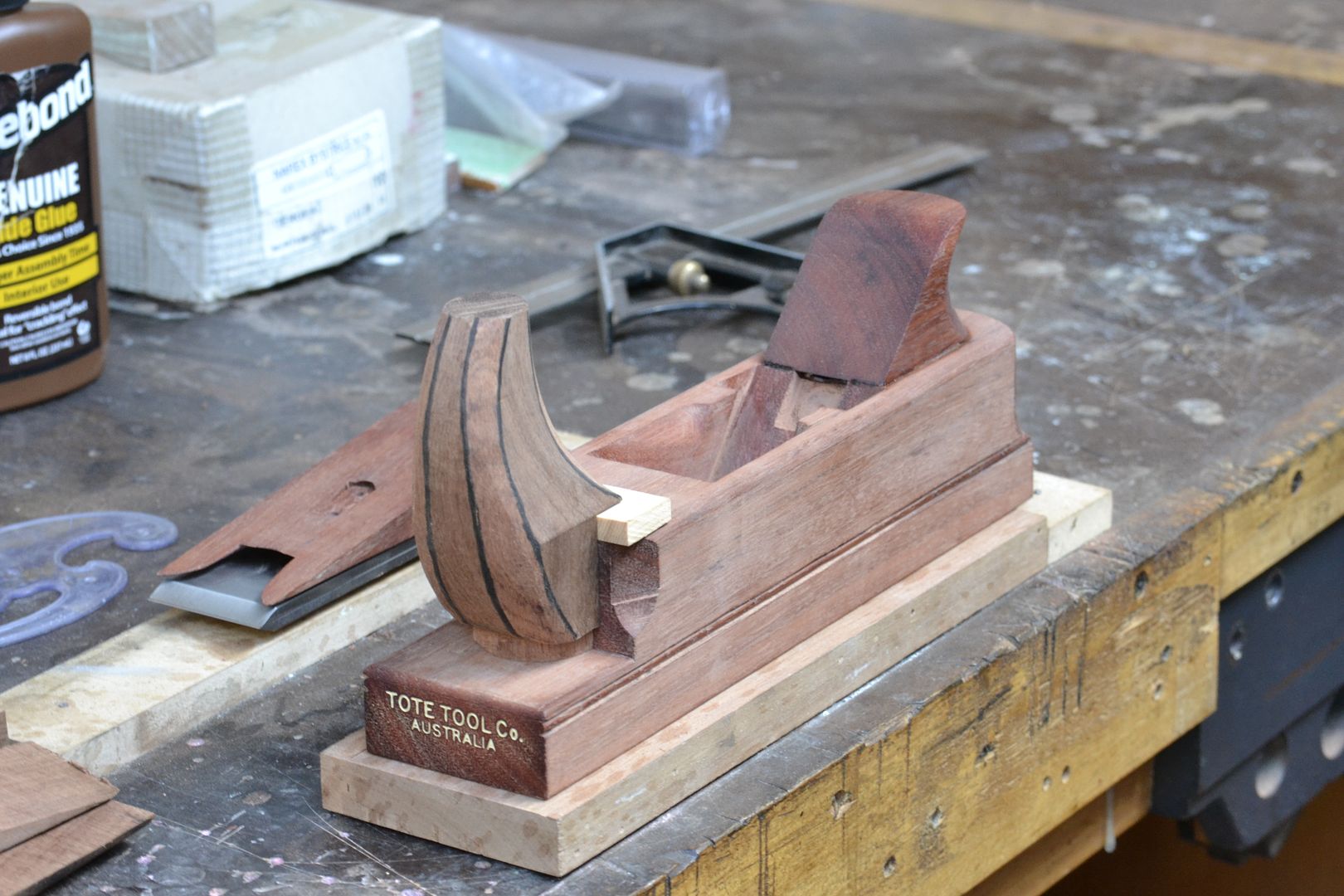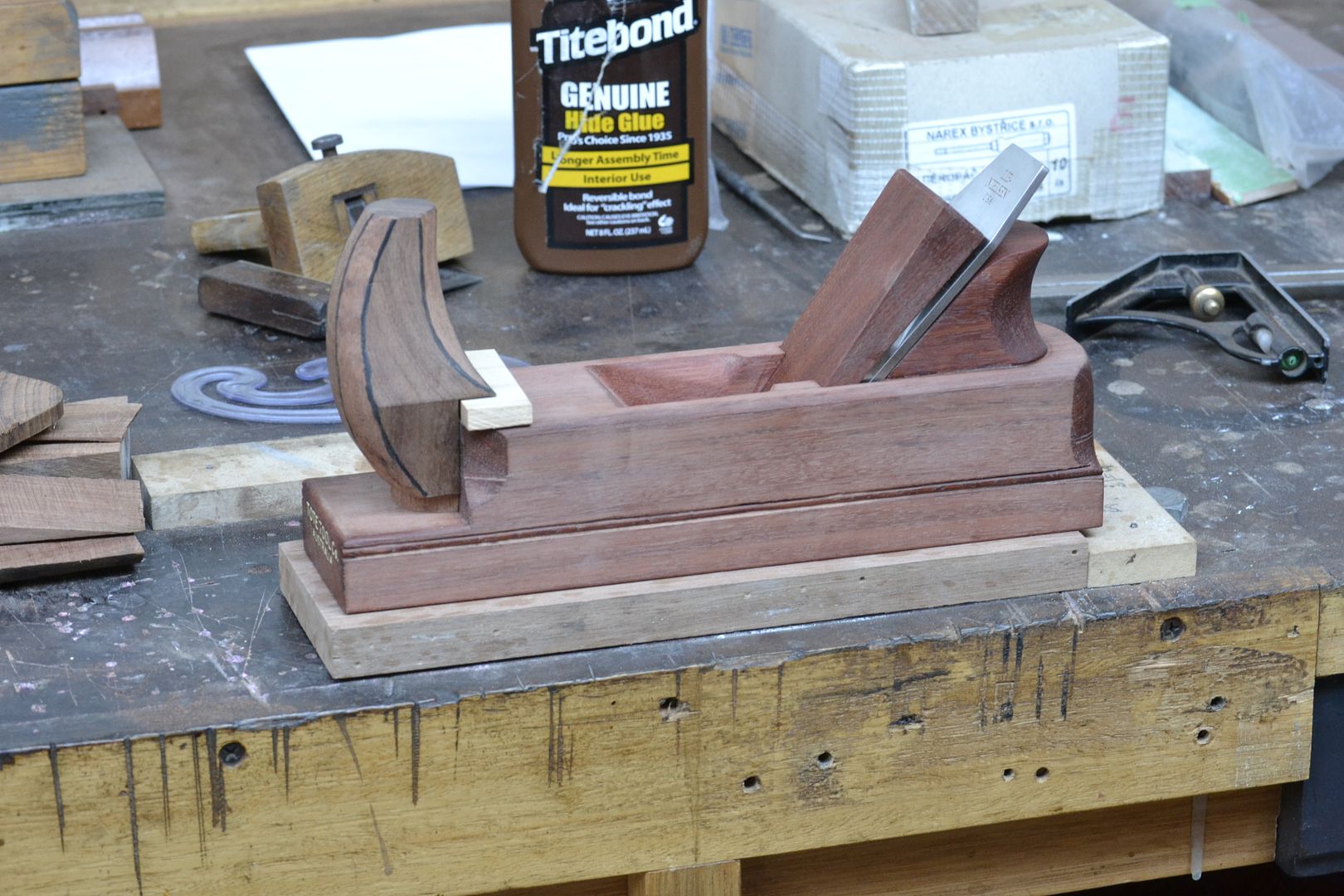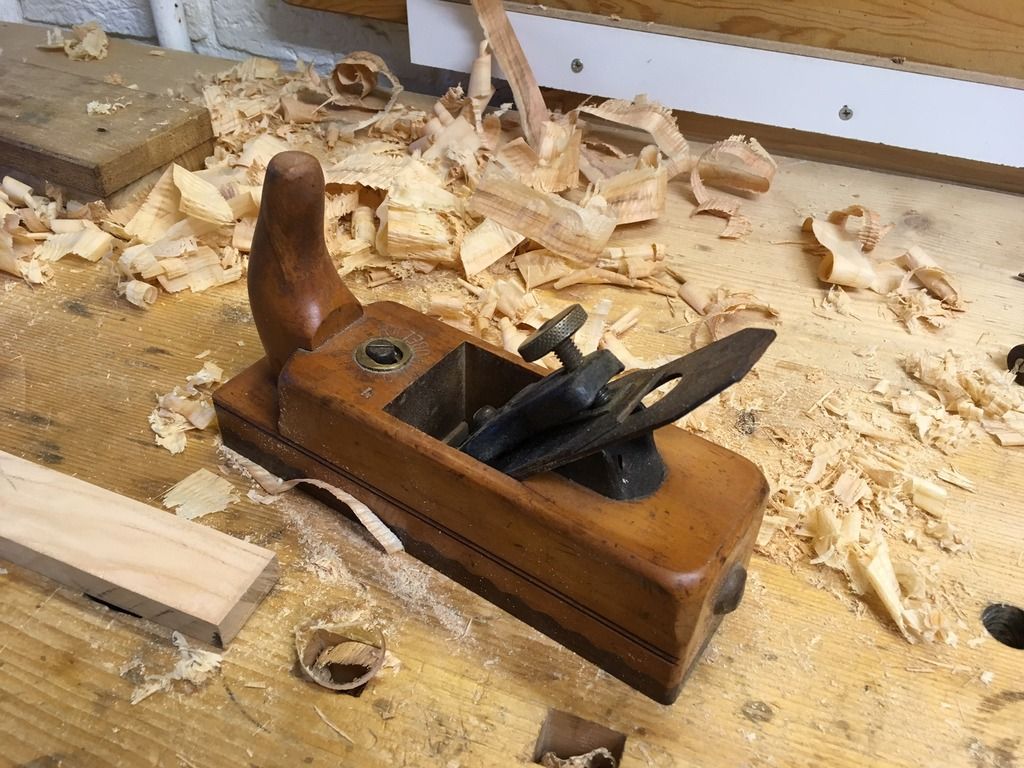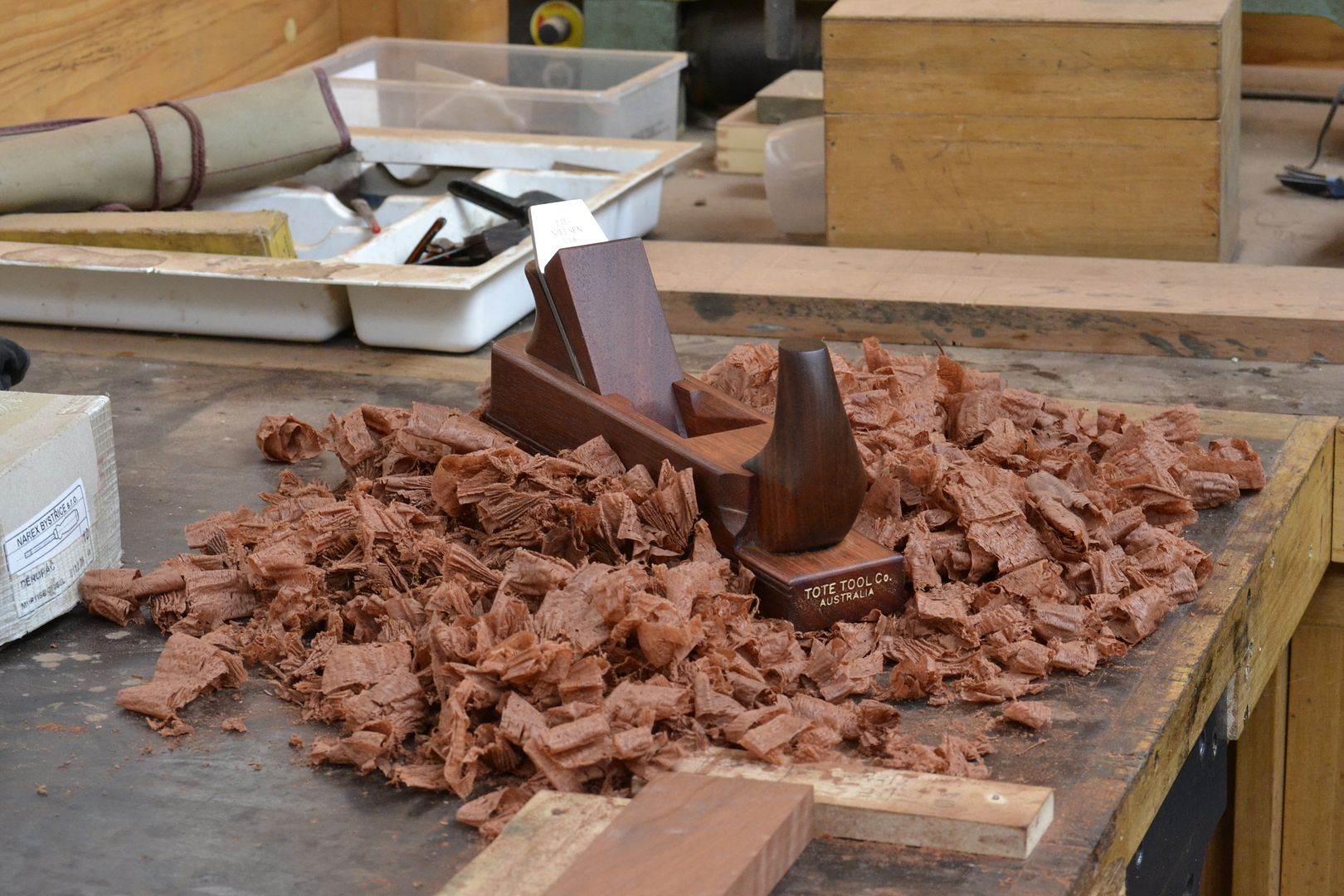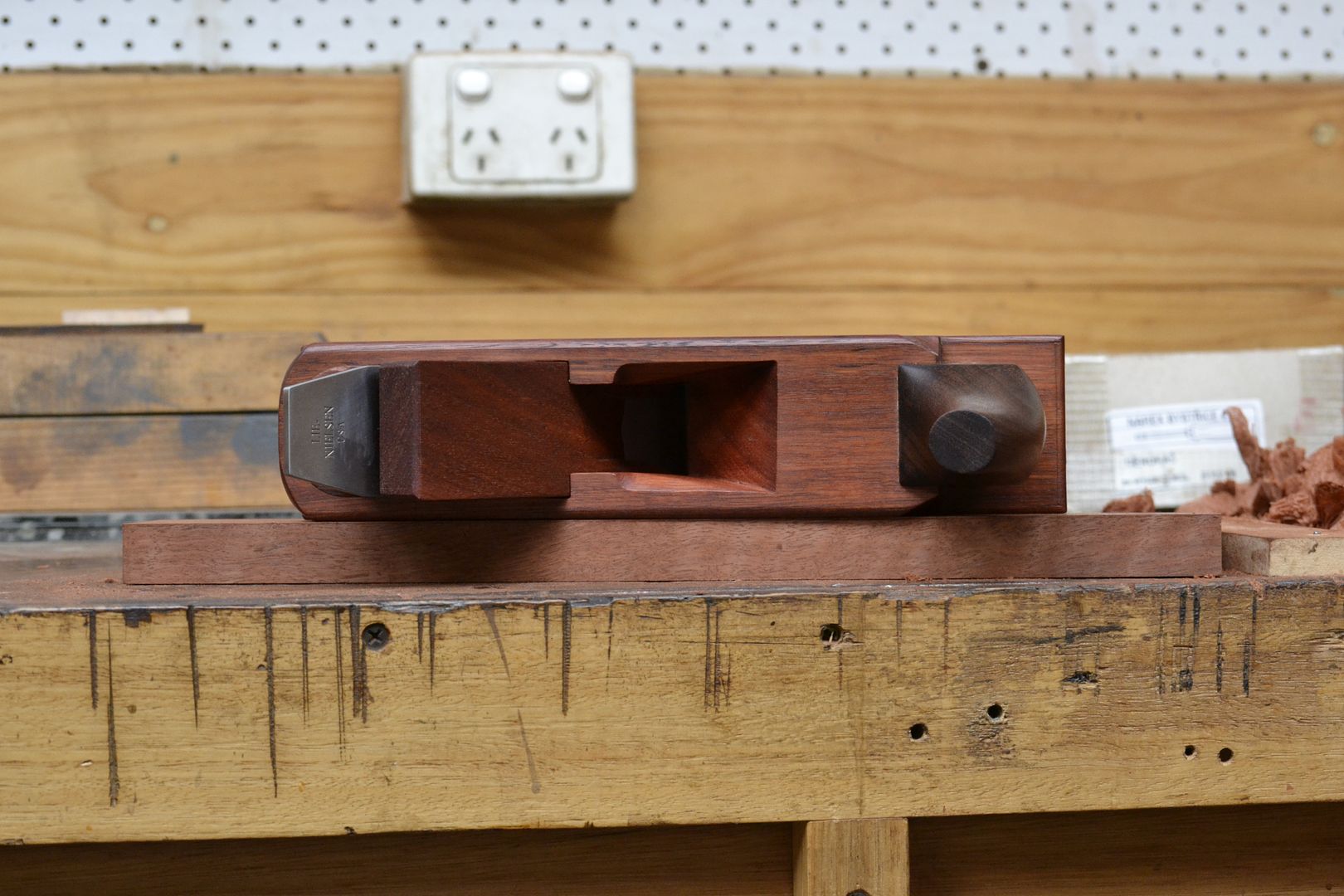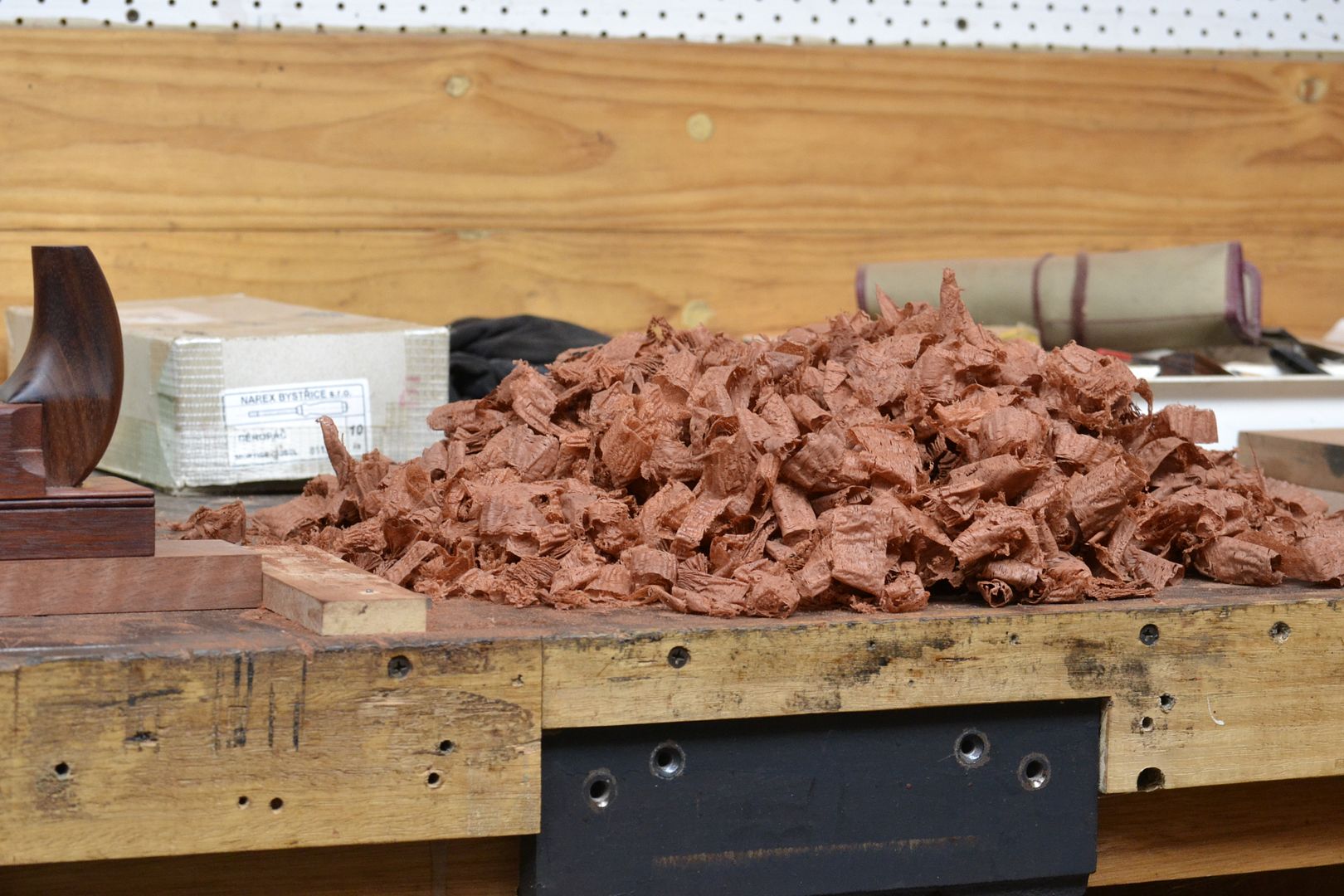Corneel - your plane was probably wider when it was new, and either never worked properly or just had enough room to adjust out the lateral issue (which presumably exists with the cap iron if your blade matches the cap iron). You may wish to adjust the cap slightly.
If the cap iron moves when adjusting the plane, you want to decrease the friction on the cap and increase the friction at the cap screw and across the soft part of the blade. Coarse sandpaper on the mating surface of each (the underside of the cap iron further up away from the edge as well as the soft part of the iron if it's laminated), scratches parallel to the edge, of course. Or you can scuff the back side of the blade and sand the underside of the cap screw.
You probably know all of those things. Certainly don't throw out the plane!
I've got three planes of that style, but all are wedged. I've set one up as a jack, the second has a buck branded old double iron (that is soft, but takes a fine edge) and the third is a mujingfang rosewood plane. They are all light like a coffin smoother (I'm not in love with coffin smoothers for harder wood), but with the two handed grip, you can crank on them in penultimate dimensioning work and they have the same influence that a heavy plane would. Plus, they work push or pull easily without being awkward.

